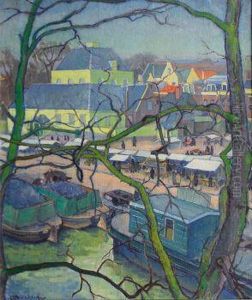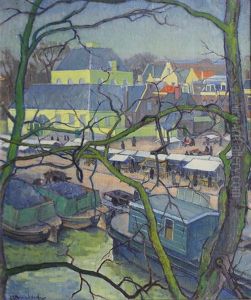Meijer Bleekrode Paintings
Meijer Bleekrode, also known as Meijer Isaac Bleekrode or M.I. Bleekrode, was a Dutch Jewish artist and graphic designer born on October 25, 1896, in Amsterdam, Netherlands. His artistic career began in an era marked by significant upheavals due to World War I and the interwar period, which influenced the themes and expressions of many artists of his time.
Bleekrode showed an early talent for drawing and painting, and he pursued his passion for art through formal education. He studied at the Rijksakademie van beeldende kunsten (State Academy of Fine Arts) in Amsterdam. His style was varied, encompassing different techniques and media including etching, lithography, and watercolor painting.
His work is characterized by its detailed realism and often depicted cityscapes, landscapes, and scenes of daily life. Bleekrode had a particular interest in capturing the urban environment, with a keen eye for architecture and the hustle and bustle of city life. His representations of Amsterdam's streets and canals convey a vivid sense of place and era.
The rise of National Socialism in Europe and the outbreak of World War II had a profound impact on Bleekrode's life and work. As a Jew, he was subject to the anti-Semitic laws and policies of the Nazi occupation in the Netherlands. Despite the increasing danger, he continued to produce art during the early years of the war.
Tragically, Meijer Bleekrode's life and artistic career were cut short by the Holocaust. He was deported to the Sobibor extermination camp in occupied Poland, where he was murdered on July 23, 1943. His death marked the loss of a promising artist whose full potential was never realized due to the atrocities of war and genocide.
Despite the brevity of his career, Bleekrode's work left a lasting impression and contributes to the cultural memory of the pre-war period in the Netherlands. Today, his surviving pieces serve not only as artistic achievements but also as historical documents reflecting the vibrant urban life of Amsterdam in the early 20th century and the dark shadow cast by the war.

